What is an IDE? What You Need to Know About an Integrated Development Environment
What is an IDE
First what does IDE stand for?
The term “IDE” stands for Integrated Development Environment. Simply said, an IDE is a comprehensive software package used in programming. It combines many useful tools for building software, offering a simple development experience.
An IDE supports various aspects of software development. Thus, it increases the productivity of development. In this article, we will further discuss these integrated tools and the benefits of using an IDE.
What does the “Integrated” in IDE imply?
An IDE is a combination of multiple tools that work as a single unit out of the box. It can be used to ramp up the development process. The following are the three main integrated components of an IDE:
- A code editor –
This is the core component and the visually dominating tool of an IDE. It is used for writing code and making changes to the source code.
The code editor can read and view many different file formats. They can be text-based formats or other media files like SVG and standard image formats.
There are some general-purpose text editors. Examples are Notepad for Windows, Kate for GNU Linux/KDE, and WordPad for Windows. The code editor of an IDE has more features than them and improves the coding experience.
Usually, the code editor has features like syntax highlighting, indentation, search, and auto-completion. It also includes a project hierarchy view for easy access to files in the working project. There is also a mini-map view for easy access to open files.
- A Compiler / an interpreter –
They convert a human-readable program into a machine or computer-readable, executable program. - A Debugger – It is used during the testing phase to find and resolve issues (bugs) in the program/software.
- Build Automation Tools – Automate basic repetitive tasks like code minification and compilation. They improve productivity by avoiding the need to perform these tasks manually.
While the above tools are common in IDEs, some may include even more tools with a specific purpose. You can extend the functionality of most modern IDEs by installing extensions (plugins).
What are the key features of an IDE?
- The ability to create project workspaces and seamlessly switch between projects.
- Syntax highlighting and type error highlighting.
- Support for code indentation, providing better readability.
- Auto code completion and code suggestions
- Support for version control
- Advanced Search and Replace
- Automated refactoring
- Debugging tools
- Multiple layout views in the code editor (ex: split-screen view)
- Code referencing
- The ability to extend the functionality with plugins
- Comes with a compiler/interpreter or running server to execute the program.
What are the Benefits of using an IDE?
- The ability to set up and configure the development environment in less time.
- Standardization and regulation of the development process
- A quicker and better debugging with integrated debugging tools.
- Convenient project management with the ability to switch between multiple projects.
- Features like syntax highlighting simplify reviewing and modifying the code.
- Seamless development process with all the required tools within a single application. It benefits rapid development practices.
- The ability to save time on basic, repetitive tasks with build automation tools.
- In large projects, you usually have to work with several programming languages. For example, think of a web project that uses PHP, CSS, HTML, React, SASS, and more). Therefore, The support for multiple languages will be useful.
What are the types of IDEs
There are many IDEs in the market to choose from. So developers should choose the best one that suits them and the project.
Let us go through the common types of IDEs one by one. We can differentiate these IDEs by their intended usage.
1. Multi-Language IDE
These are general-purpose toolkits. They aren’t specialized in one programming language but support many programming languages. These types of IDEs are the most popular and widely used.
– Eclipse: This IDE was initially developed mainly for the Java language. However, users can extend it via plugins to work with other programming languages. A few examples of such languages are C/C++, Clojure, Erlang, Lua, PHP, D, Python, Prolog, COBOL, Scala, Rust, Pearl, and Ruby. Eclipse is open-source that can be downloaded freely.

– Visual Studio from Microsoft: This is a well-known IDE with a lot of features that any developer will need. It was originally developed for Microsoft’s own C# and .NET languages. Now you can also use it with other languages such as C/C++, Visual C++, and DHTML.

– Nebeans: Apache Netbeans was originally developed as an IDE for Java development. Now, it has evolved to support other languages, including PHP, JavaScript, Ruby, Python, and C/C++.

Geany: A highly customizable and lightweight IDE. It supports several languages, including C/C++, Python, Java, HTML, CSS, PHP, and Pearl.
2. Mobile App Development IDEs
These IDEs are specially designed for mobile app development. They come with code editors, debuggers, compilers, drag-and-drop layout builders, and emulators. You can also configure some multi-language IDEs for developing mobile apps. For instance, you can configure Eclipse for Android app development.
– Android Studio: Google’s official IDE for developing Android apps. It’s based on IntelliJ Idea. Android Studio is a complete development setup for mobile app development. Developers hardly need any other tools when they have Android studio.

– XCode: Used for developing software for iOS and other Apple devices.

– DroidScript: This IDE can be used with HTML/JavaScript to create mobile applications. It supports HTML, CSS, and JavaScript.
– Xamarin Studio: A cross-platform IDE with Xamarin for rapid app development.

These IDEs are specially designed for mobile app development. They come with code editors, debuggers, compilers, drag-and-drop layout builders, and emulators. You can also configure some multi-language IDEs for developing mobile apps. For instance, you can configure Eclipse for Android app development.
– Android Studio: Google’s official IDE for developing Android apps. It’s based on IntelliJ Idea. Android Studio is a complete development setup for mobile app development. Developers hardly need any other tools when they have Android studio.
– XCode: Used for developing software for iOS and other Apple devices.
– DroidScript: This IDE can be used with HTML/JavaScript to create mobile applications. It supports HTML, CSS, and JavaScript.
– Xamarin Studio: A cross-platform IDE with Xamarin for rapid app development.
– Eclipse with Android SDK: With the SDK, developers can use Eclipse to create native Android apps. Yet, it is a bit of an advanced process. You need to install some application packages to configure Eclipse for app development.

– Cordova
– AIDE
– Appcelerator Titanium
3. Web Development IDEs
Developers will greatly benefit from a carefully chosen IDE for web development.
You can do some basic code editing with a simple text editor such as TextMate, Atom, or Notepad++. However, you can gain many benefits by using an IDE for a large real-world project.
– Visual Studio Code :
VSCode by Microsoft includes some great features from their full-fledged IDE, Visual Studio. This IDE has almost everything you need for any web project. It’s extremely flexible and uses fewer resources. Moreover, it’s extendable, lightweight, cross-platform, and available free of charge.

– Sublime Text :
Sublime Text is one of the most popular text editors for web development. It’s very lightweight but has many features. This IDE comes with a nice interface, many extensions and support syntax highlighting.

– PHPStorm :
PHPStorm is specially designed for PHP-based web development projects. It is one of the best IDEs with excellent support for PHP functionalities. It comes with tons of built-in tools for debugging, testing, and better coding. Moreover, this IDE is useful for rapid development. One drawback is that PHPStorm is not free to use as many other IDEs.

4. Cloud Based IDEs
This is quite a new type that provides IDE functionality as SaaS applications. These IDEs have gained a lot of attention over a short time period. The key advantage is you don’t need to install any software on your machine. You don’t have to do tedious configurations as well.
You can run your IDE as a web-based application and use it anywhere on any device you want.
– Cloud9 IDE
– Nitrous
– Heroku IDE
Some General Misconceptions About IDEs
So far, we have discussed how great it would be to use an IDE for a development project. Yet it will not always be true, and sometimes using an IDE won’t magically improve the productivity of a project.
In this chapter, we will discuss some common misconceptions about IDEs.
- An IDE can automatically fix errors :
An IDE cannot automatically fix any or all errors. However, it can highlight some typos, missing semicolons, and such. The developer should have the knowledge to identify any issues and apply fixes. - An IDE will make developers’ lives easier :
Using an IDE will not be easy all the time. The numerous functionalities of an IDE will distract a beginner. Also, the learning curve can be a bit too much. So it’s recommended to first get familiar with the essential and basic tools before going for an IDE. - An IDE will enable a faster development process :
This fact is generally true since an IDE combines a set of necessary tools. Most IDEs take considerable space of memory compared to code editors. IDEs like Visual Studio can take a lot of time to load. Therefore, some developers prefer lightweight code editors like over IDEs. - IDEs can work with different languages.
Yes, but it is not always going to work. Sometimes there’s no single IDE that supports all the languages you need. So you have to use several IDEs for a project. - IDEs provide a better coding experience:
Well, not for everyone. Either all or most of the tools that come with an IDE require some space on your screen to show up. Thus, it limits your actual visual editing space while also bothering some users.
Choosing the IDE that suits you
It’s crucial to choose the best IDE for your requirements from the swamp of IDEs out there. However, the best choice won’t always be the same. You have to make a wise decision depending on the requirements of each project.
Now let’s walk through the facts you need to consider when choosing an IDE.
- Language support : The IDE should support the programming languages you use. There might be multiple choices, and you need to choose one that has the best support for the languages. You should also consider features such as compilation/interpretation and syntax highlighting.
- Cost: You can find both paid and free IDEs. Paid IDEs often come with some advanced features lacking in free IDEs. Sometimes the core IDE is free while extensibility (using extensions/plugins) is not. So you have to compare the cost carefully and what the IDE has to offer.
- Ease of use and speed: Sometimes IDEs consist of tons of features that feel like a redundant way of doing things. However, those features will overwhelm the user. Moreover, it will be slow to respond and operate with these numerous tools. So, unless essential, it’d always be better to look for a simple IDE with only basic features.


